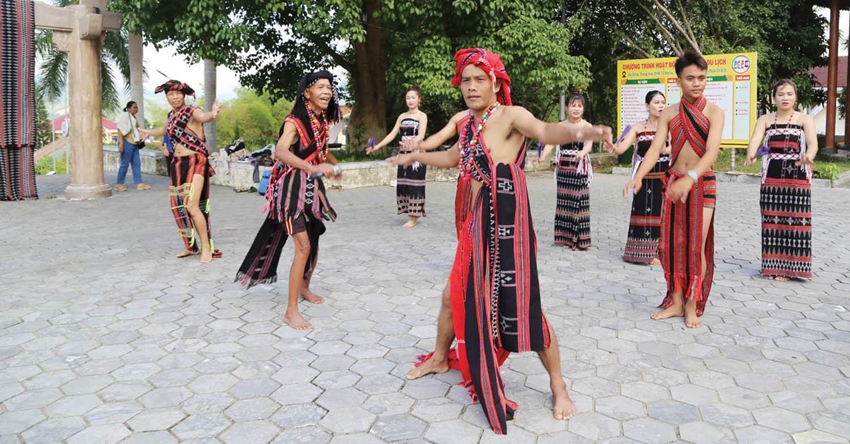 |
| Dances are the way people express their joy and gratitude to the gods. |
The Tac Ka Coong Festival, also known as the mountain god worshiping ceremony, has become an indispensable cultural feature in the spiritual life of the Co Tu people. This year's festival was held at the Cultural Activity Center of the Ethnic Groups of A Luoi District, attracting not only local people, but also many tourists to attend and experience the unique culture of the Co Tu people.
Thank God
Mr. Ho Van Xap, an 83-year-old village elder who has been attached to the Lam Dot mountain area all his life, shared about the Tac Ka Coong festival: “This festival has been around for a long time, since I was a boy, I saw the elders hold ceremonies to worship the mountain god, the river god, praying for peace for the villagers. We believe that the mountain god is the one who protects and blesses the villagers, helping us have a prosperous life. Therefore, the Tac Ka Coong festival is an opportunity to thank the gods.”
Tac Ka Coong is a ritual to thank the mountain god, forest god, and river god for protecting the villagers from natural disasters and epidemics and helping the crops to be prosperous. For the Co Tu people, nature is the source of life, bringing prosperity to the fields, streams, forests, and feeding people and animals. Therefore, they attach special importance to this ritual and spend a lot of time preparing it with deep respect.
Before the festival begins, the village elder will hold a meeting with the clan leaders to discuss how to organize it, what offerings to make, and assign tasks to each village member. “Not just a simple worship ceremony, Tac Ka Coong is also an opportunity for people to review themselves, to “cleanse” or purify any misfortunes that their descendants in the village may have caused,” explained Elder Xap.
The offerings include the best that the villagers have after the harvest, such as buffalo, chicken, sticky rice, and dishes made from fragrant sticky rice. The people who offer the offerings are carefully selected. They are young men and women with pure souls and gentle beauty, symbolizing the whole community's respect for the gods.
Special rituals
One of the highlights of the festival is the ceremony of erecting the pole, a sacred symbol representing the strength and connection between humans and the gods. Gia Xap explained: “The pole is a symbol of connection with the gods and also a way for us to signal to everyone that the festival is about to begin. This pole must be erected straight and firmly to show respect to the gods. If the pole falls, it is a bad omen.”
The pole is selected from tall, sturdy trees, carved with sacred motifs and decorated with colorful cloth strips, to express wishes for peace, happiness and protection from the gods. When the pole is erected, the village elders will recite prayers together, thanking the gods for protecting the villagers and praying for a bountiful harvest in the coming season.
The feast is also elaborately arranged, including traditional dishes made from ingredients harvested in the village such as chicken, buffalo, pork and cakes made from fragrant sticky rice. Ms. Ho Thi Na, a daughter of the village, shared about the offering ceremony: “This is a ceremony that everyone cherishes. The offering is a symbol of gratitude and a wish for blessings from the gods. We choose young men and women with beautiful appearance and good character to offer the feast, because we believe that kind and pure people will please the gods.”
When the tray of food was placed on the Pa Ra table, the village elders and clan leaders performed the offering ceremony. Sincere prayers were recited, inviting the gods to witness and enjoy the tray of food. The best and freshest dishes were placed on the table, symbolizing the sincerity and gratitude of the whole village.
When the worshiping ritual ends, the festival moves into the joyful part with the traditional “tung tung za za” dance. The Co Tu people join in the sound of gongs and drums, dancing with excitement and solidarity. The “tung tung za za” dance is the pride of the Co Tu people, with strong, vigorous movements symbolizing the strength, courage and resilience of the whole community.
Local people, in traditional costumes with delicate patterns, blend into the festival atmosphere. They sing, dance and hold hands in solidarity, while teaching cultural values to their children. This is an opportunity for the Co Tu people not only to have fun and bond with the community but also to remember the history, legends and culture of their people.
The Tac Ka Coong Festival not only has spiritual significance but is also an opportunity for the community to sit together, share and connect. In the coming time, A Luoi district plans to develop the Tac Ka Coong Festival into a highlight in community tourism , aiming to introduce the beauty of Co Tu culture to domestic and foreign tourists. Ms. Le Thi Them, Head of the Department of Culture and Information of A Luoi district shared: “We want to preserve and promote the cultural values of the Co Tu people and other ethnic minorities in the area. The Tac Ka Coong Festival is a valuable cultural feature that we have been restoring, with the hope that visitors can come and experience the most authentic mountain culture”. |
Source: https://baothuathienhue.vn/van-hoa-nghe-thuat/han-hoan-cung-le-hoi-tac-ka-coong-148036.html



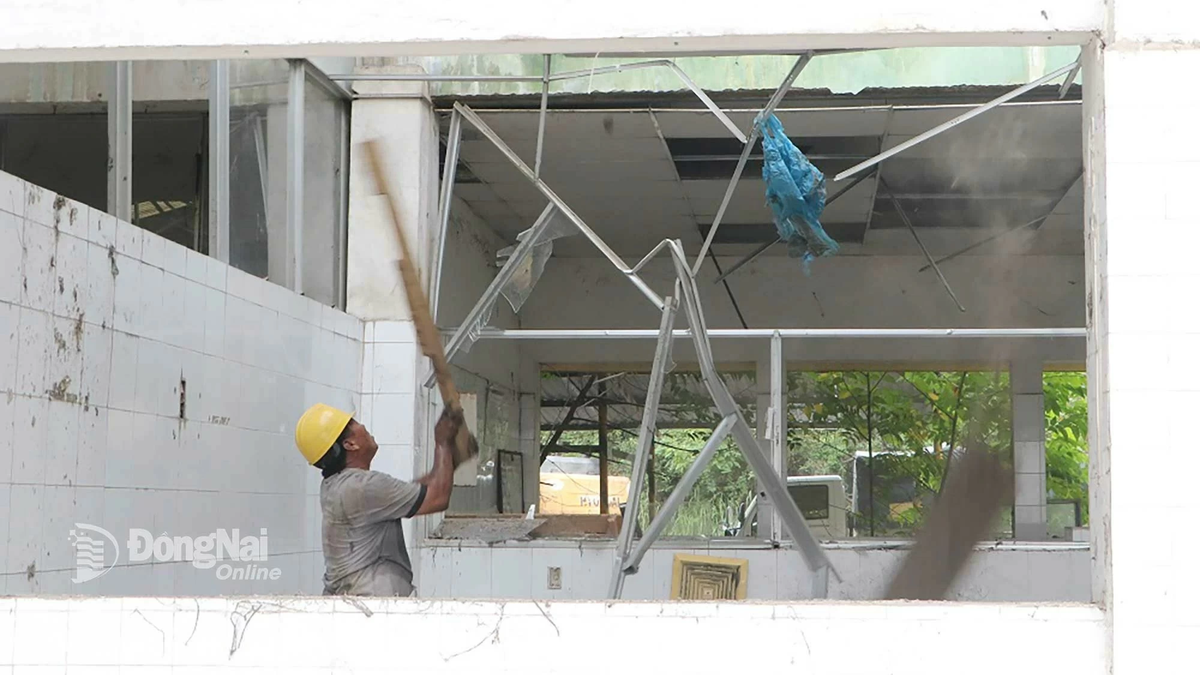
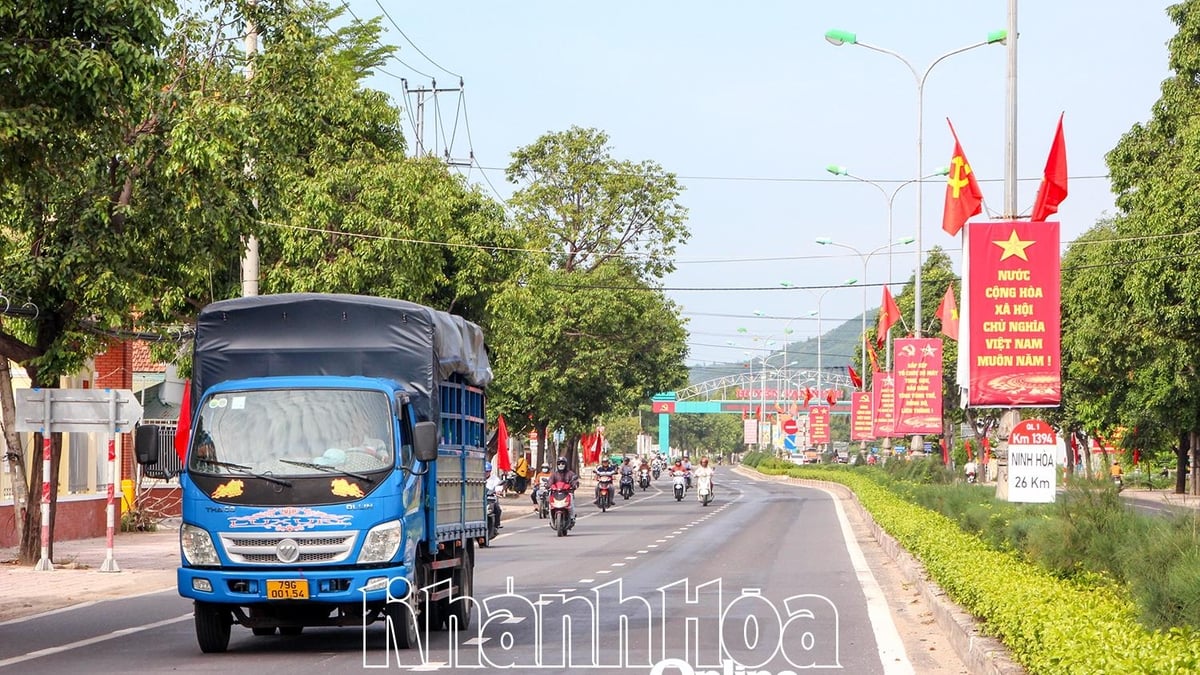
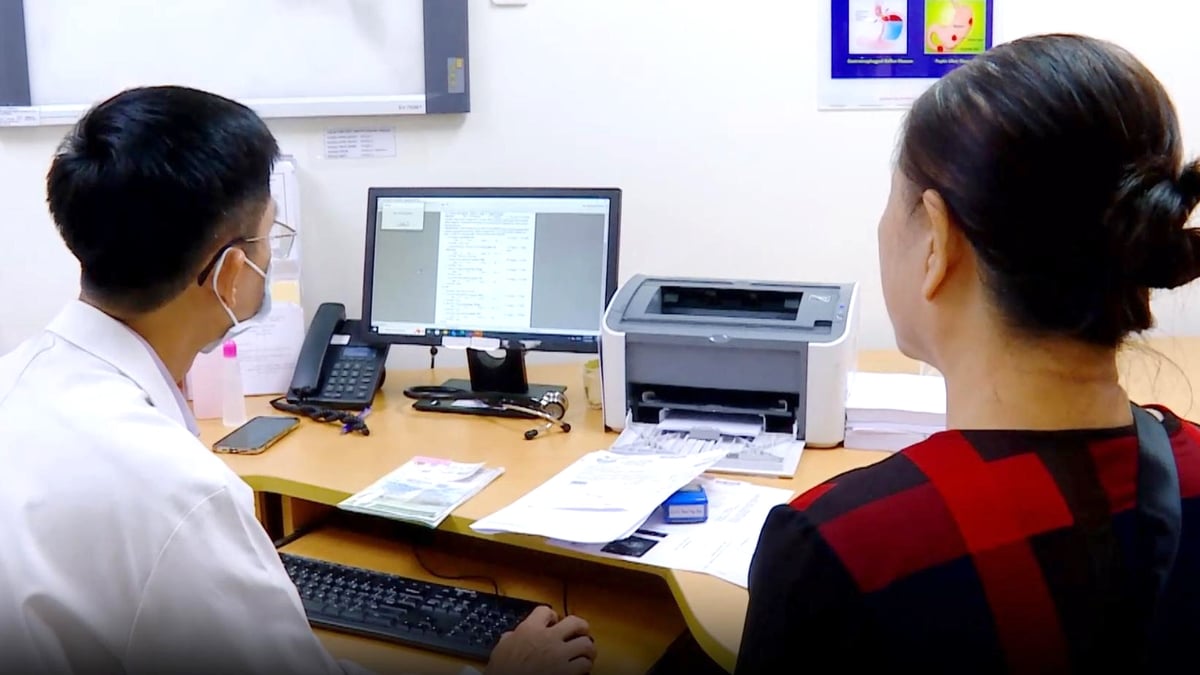
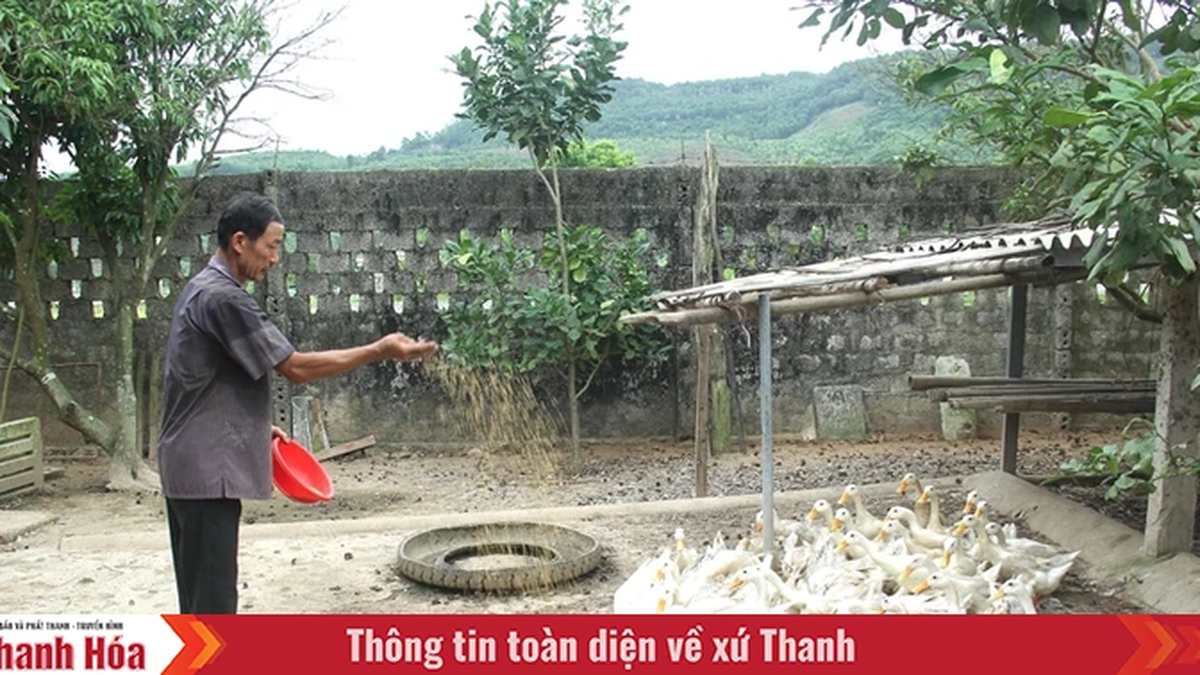
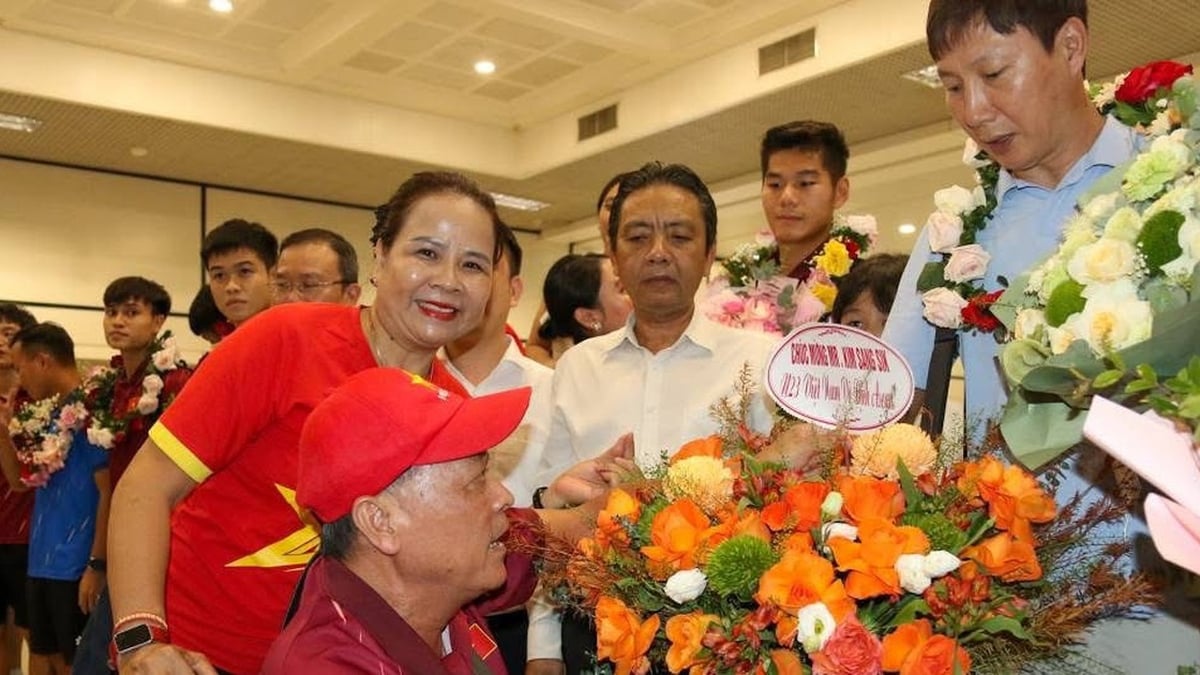

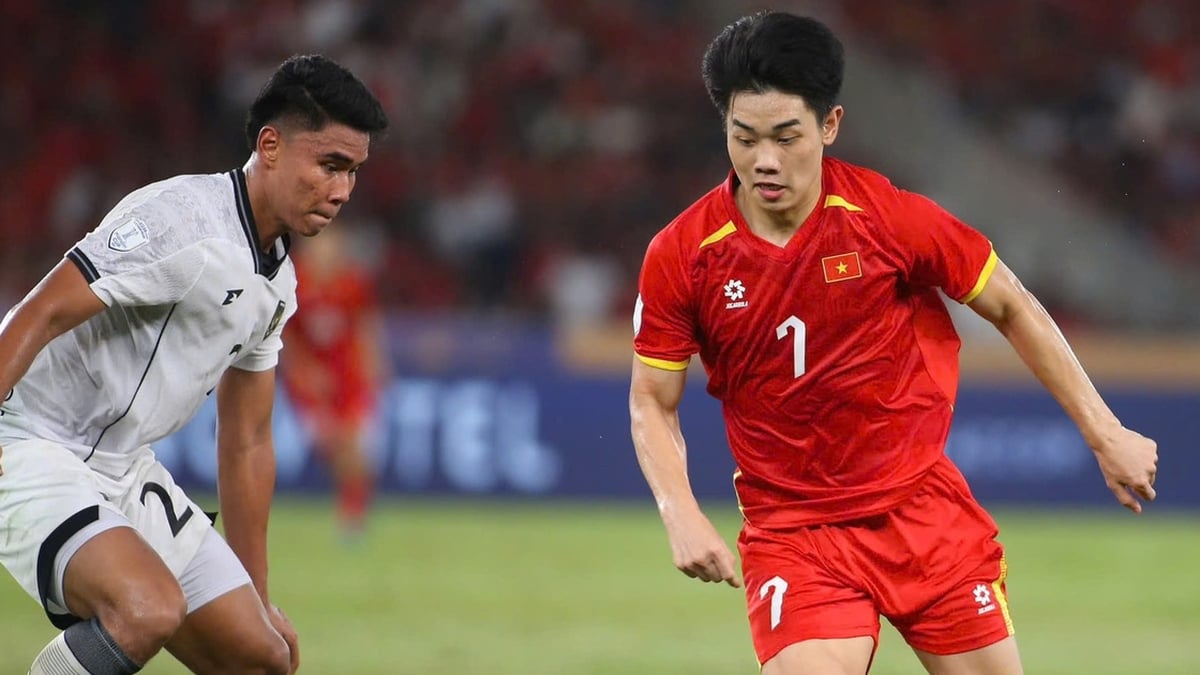













































![[Maritime News] Container shipping faces overcapacity that will last until 2028](https://vphoto.vietnam.vn/thumb/402x226/vietnam/resource/IMAGE/2025/7/30/6d35cbc6b0f643fd97f8aa2e9bc87aea)









































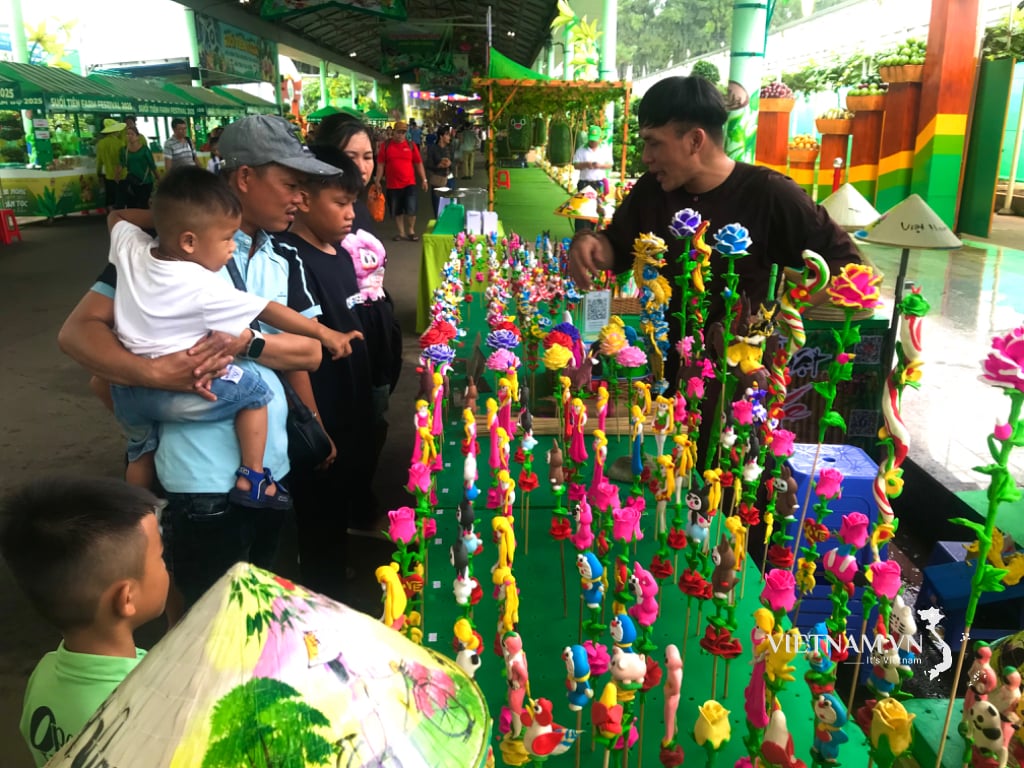

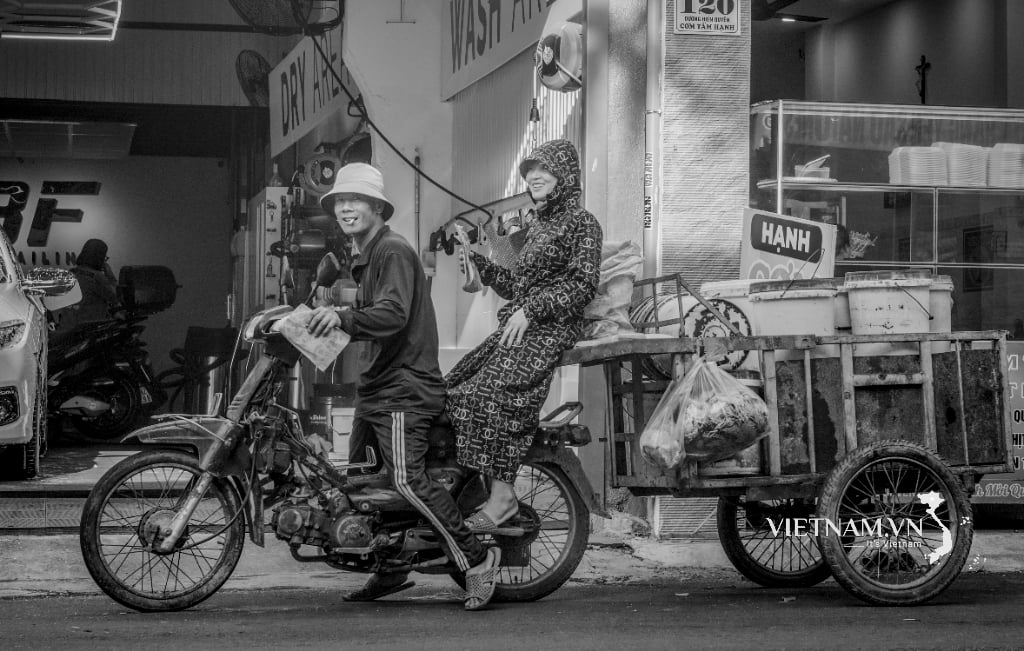
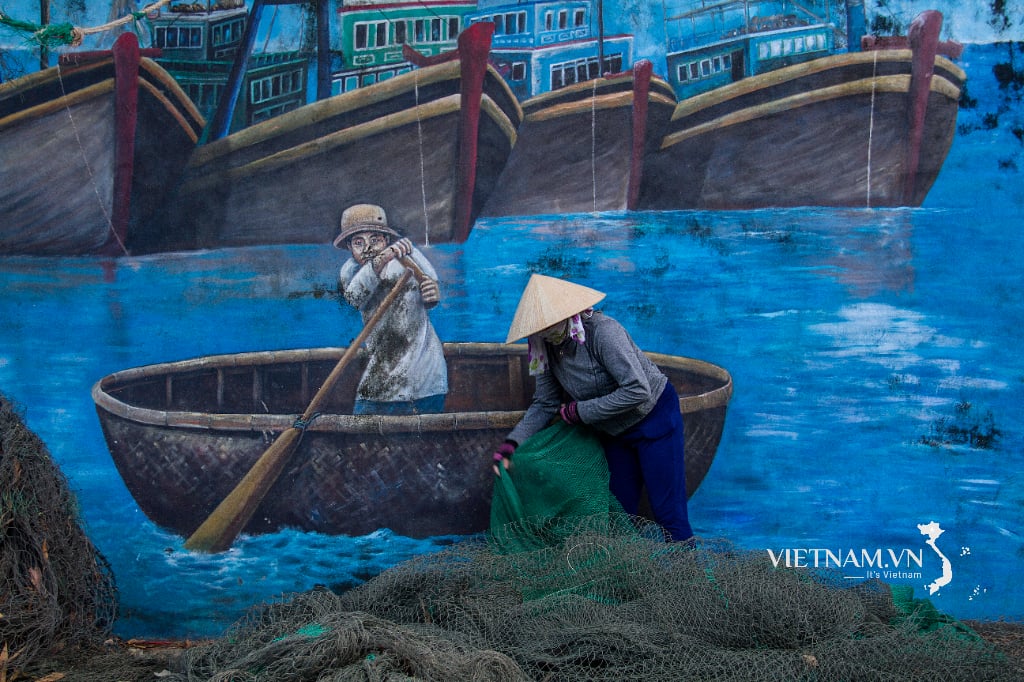
Comment (0)